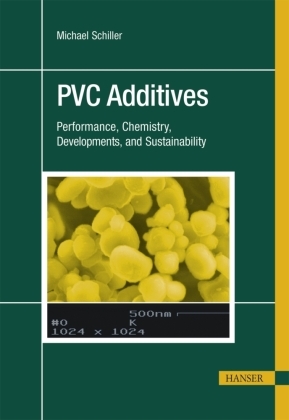
PVC Additives - Performance, Chemistry, Developments and Sustainability
Vergleich zu frühere Preisbindung3
| Verlag | Hanser Fachbuchverlag |
| Auflage | 2015 |
| Seiten | 432 |
| Format | 17,5 x 24,5 x 2,2 cm |
| Gewicht | 920 g |
| Artikeltyp | Englisches Buch |
| EAN | 9781569905432 |
| Bestell-Nr | 56990543U |
PVC differs in its stabilization compared to other commodity plastics. Various metal compounds are suitable for the stabilization of PVC: lead, tin, calcium, magnesium, zinc, rare earths, and also almost-metal-free systems. These differences are described in the introductory part of this book, with their advantages, possibilities, and problems, from the perspective of the chemist but made understandable for salespeople and technicians.
Numerous tables and figures are included, providing structures and physico-chemical data. A special section for beginners is dedicated to guiding formulations and test methods. A relatively short section deals with development trends in Europe. Sustainability is a major theme, and it is demonstrated that PVC has a strong potential to develop into a fully sustainable material.
Another section deals with the everyday problems in the processing of PVC, such as the formation of specks, photo-effects, and plate-out. Plate-out is a common pr oblem in the processing of PVC but only relatively few publications cover it. The causes, influencing factors, and mechanisms are still poorly understood. This section, unique in the literature, provides assistance in the selection and dosage of raw materials to PVC processor, based on the influencing factors during processing.
Rezension:
"Dieses Buch bietet eine umfassende Darstellung der Stabilisatorsysteme und anderer Additive für PVC." Kunststoffe, Juni 2015
"Das Buch ist leicht verständlich geschrieben, mit der Absicht das Thema nicht nur fortgeschrittenen Chemikern und Kunststofftechnikern, sondern auch Einsteigern nahe zu bringen." GAK Gummi - Fasern - Kunststoffe, Juni 2015
PVC differs in its stabilization compared to other commodity plastics. Various metal compounds are suitable for the stabilization of PVC: lead, tin, calcium, magnesium, zinc, rare earths, and also almost-metal-free systems. These differences are described in the introductory part of this book, with their advantages, possibilities, and problems, from the perspective of the chemist but made understandable for salespeople and technicians.
Numerous tables and figures are included, providing structures and physico-chemical data. A special section for beginners is dedicated to guiding formulations and test methods. A relatively short section deals with development trends in Europe. Sustainability is a major theme, and it is demonstrated that PVC has a strong potential to develop into a fully sustainable material.
Another section deals with the everyday problems in the processing of PVC, such as the formation of specks, photo-effects, and plate-out. Plate-out is a common pr oblem in the processing of PVC but only relatively few publications cover it. The causes, influencing factors, and mechanisms are still poorly understood. This section, unique in the literature, provides assistance in the selection and dosage of raw materials to PVC processor, based on the influencing factors during processing.
